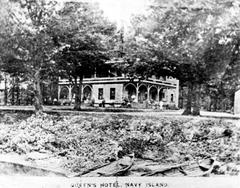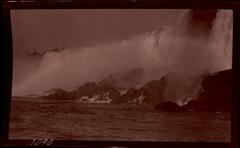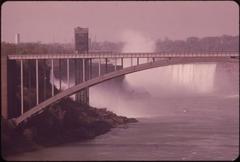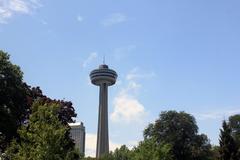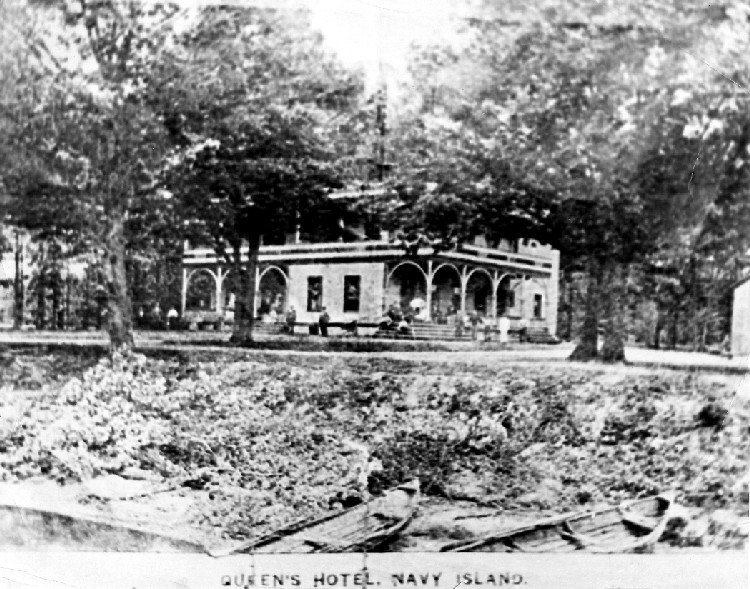
Navy Island Visiting Hours, Tickets, and Travel Guide – Niagara Falls Historical Sites
Date: 14/06/2025
Introduction
Navy Island, located quietly within the Niagara River just upstream of the world-famous Niagara Falls, is a rare blend of natural beauty, ecological diversity, and significant Canadian history. Entirely within Ontario, Canada, this uninhabited island covers about 1.2 kilometers in length and is managed as a protected conservation area by Parks Canada. Its story encompasses Indigenous heritage, British naval shipbuilding, and pivotal events like the War of 1812 and the Upper Canada Rebellion. Because of its fragile ecosystem and historical value, Navy Island is currently closed to general public access to ensure its preservation, but it remains a focal point for historical interest and ecological protection.
This guide will provide authoritative information on Navy Island’s location, current visiting status, historical context, ecological importance, and how to responsibly appreciate this hidden gem of the Niagara region. For the most current updates and detailed planning, refer to resources such as Kayak Ontario’s Navy Island guide and Parks Canada’s official site.
Table of Contents
- Introduction
- Location and Setting
- Historical Significance
- Current Access and Visiting Hours
- Ecological Features and Conservation
- Viewing Navy Island and Nearby Attractions
- FAQs
- Conclusion and Visitor Guidance
- References
Location and Setting
Navy Island is situated in the upper Niagara River between Niagara Falls, Ontario, and Grand Island, New York. Its coordinates are approximately 43.0706° N, 79.0336° W (Mapcarta). The island’s position offers scenic river views and proximity to major Niagara region landmarks, though its isolation and swift surrounding currents have always shaped its unique character.
Historical Significance
Indigenous Heritage
Archaeological evidence reveals that Navy Island and the Niagara region have been inhabited for at least 10,000 years. The Neutral Nation (Attawandaron), an Iroquoian-speaking people, used the island for fishing, hunting, and as a waypoint in trade and travel networks (The Canadian Encyclopedia). The island’s role in Indigenous life marked it as a site of both sustenance and spiritual significance.
Colonial and Military History
With the arrival of European explorers in the 17th century, Navy Island’s strategic value grew. The French established a shipyard during the Seven Years’ War to control Great Lakes navigation. After British acquisition, the island’s importance as a naval and military outpost continued (Historica Canada PDF).
The War of 1812 and Shipbuilding
During the War of 1812, Navy Island served as a British shipyard, where warships like the HMS St. Lawrence were built to secure control of the Great Lakes (Parks Canada). Remnants of these early 19th-century shipbuilding activities remain.
The Rebellions of 1837–1838
The island played a dramatic role during the Upper Canada Rebellion. In 1837, William Lyon Mackenzie and his supporters established the short-lived “Republic of Canada” on Navy Island, resulting in a British military siege and the infamous Caroline affair, further embedding the island in Canadian history (Library and Archives Canada).
20th Century and Preservation
Navy Island’s military use waned after the 1830s. In 1921, it was designated a National Historic Site. Notably, the island was briefly considered for the United Nations headquarters in 1945, underlining its international symbolic value. Since 1949, Navy Island has been managed as a Wildlife and Crown Preserve, emphasizing its conservation (Parks Canada).
Current Access and Visiting Hours
Public Access Status
Navy Island is closed to public access as of June 2025. Recreational activities, including hiking, boating, camping, or sightseeing on the island, are prohibited to protect its delicate habitats and archaeological resources (Parks Canada). There are no public visiting hours, permits, or tickets available. Any previous provisions for guided tours or camping have been discontinued.
Boat Access
Although Navy Island is only accessible by water, landing is not permitted. The pier is not maintained for public use, and unauthorized landing is considered trespassing on federal property.
Guided Tours
No official guided tours or public events are being conducted on Navy Island. Any authorized access is strictly limited to Parks Canada personnel for ecological monitoring and maintenance.
Ecological Features and Conservation
Navy Island is an ecological sanctuary, featuring mature deciduous forests (oak, maple, hickory), wetlands, and meadows. The island supports white-tailed deer, beaver, raccoons, and more than 100 bird species, making it a haven for wildlife (Parks Canada). Conservation efforts focus on maintaining the integrity of these ecosystems, controlling invasive species, and minimizing human impact.
The island’s closure is critical for sustaining its ecological diversity and protecting rare habitats increasingly threatened elsewhere in the Niagara region.
Viewing Navy Island and Nearby Attractions
While physical access to Navy Island is not allowed, the island can be viewed from the Canadian side along the Niagara Parkway. A historical plaque, installed by the Lundy’s Lane Historical Society in 1928, offers context and a place for reflection directly across from the island.
For those interested in Niagara’s historic and natural sites, consider these nearby attractions:
- Fort George National Historic Site: A key War of 1812 fort in Niagara-on-the-Lake.
- Old Fort Niagara: Across the river in the U.S., offering further colonial history.
- Niagara Parks Botanical Gardens and Butterfly Conservatory: Renowned for botanical and ecological experiences.
- Niagara Falls: The iconic waterfalls and visitor sites.
These locations provide engaging opportunities for historical exploration and natural appreciation.
Frequently Asked Questions (FAQ)
Q: Is Navy Island open to the public?
A: No. Navy Island is closed to all public access as of June 2025.
Q: Can I visit or camp on Navy Island?
A: No. Camping and any recreational activities are prohibited.
Q: Are there guided tours available?
A: No public or guided tours are currently offered.
Q: How can I view Navy Island?
A: The best views are from the Niagara Parkway on the Canadian mainland.
Q: Why is the island closed?
A: To protect sensitive ecological habitats and archaeological resources.
Q: Where can I learn more about Navy Island’s history?
A: Official resources such as Parks Canada’s Navy Island page and local museums offer detailed information.
Conclusion and Visitor Guidance
Navy Island stands as a testament to both Canada’s rich history and commitment to ecological preservation. Although the island is not open to the public, its legacy is accessible through mainland viewpoints, historical plaques, and nearby sites. Its story—from Indigenous stewardship to colonial conflict, and from international diplomacy to modern conservation—continues to inspire curiosity and respect.
To stay informed about access policies, conservation news, and Niagara’s many historical sites, consult Parks Canada and Kayak Ontario. Download the Audiala app for up-to-date travel tips, and follow our social media for the latest updates.
References
- Navy Island Niagara Falls: Visiting Hours, Tickets, and Travel Guide, 2025, Kayak Ontario (https://kayak-ontario.com/navy-island-niagara-falls/)
- Navy Island Visiting Hours, Tickets, and Historical Insights: Explore Niagara’s Hidden Gem, 2025, Parks Canada & Local Heritage Organizations (https://www.pc.gc.ca/en/lhn-nhs/on/navyisland)
- Navy Island Visitor Guide: Visiting Hours, Access, Ecology, and Tips for Exploring Niagara Falls’ Hidden Gem, 2025, Parks Canada & Tour Niagara (https://parks.canada.ca/index), (https://www.tourniagara.com/attractions/historical-sites/navy-island/)
- Navy Island Visiting Hours, Tickets, and Access: Your Guide to This Niagara River Historical Site, 2025, Parks Canada (https://parks.canada.ca/lhn-nhs/on/fortgeorge/culture/ile-navy-island)
- The Canadian Encyclopedia: Neutral Nation, 2025 (https://www.thecanadianencyclopedia.ca/en/article/neutral-nation)
- Historica Canada PDF: Key Moments in Indigenous History Timeline, 2025 (http://education.historicacanada.ca/files/426/Key_Moments_in_Indigenous_History_Timeline.pdf)
- Library and Archives Canada: Upper Canada Rebellion, 2025 (https://www.bac-lac.gc.ca/eng/discover/politics-government/prime-ministers/pms-canada/Pages/item.aspx?IdNumber=9)
For images and maps of Navy Island and its views from the mainland, please visit official Parks Canada and Niagara tourism resources.
